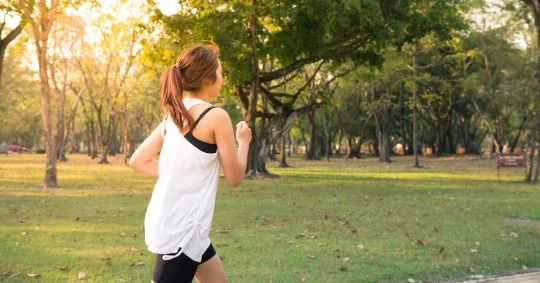Natural Knee Pain Treatments?
Question: Dr. Dan, what causes knee pain? What can I do for knee pain?
If you have knee pain when bending, running, or squatting, the most important question to answer is whether you need to see a professional and begin proper rehabilitation! I know, this is sometimes easier said than done, but the long term injuries from not doing this should make you reconsider. Let me explain.
Here’s what optimal rehabilitation for knee injuries looks like: avoid taking anti-inflammatories if you can, they often do more harm than good. Find a good osteopathic physician, acupuncturist, chiropractor, or physical therapist who is skilled in manual medicine. She will help with the rehabilitation process and ensure you’re functioning at your best biomechanically.
Where does knee pain come from?
With knee pain, you’re most likely experiencing a tear or damage to the ligaments, tendons, and support structures around the knee. Unfortunately, the most popular remedies of icing the knee, wrapping it, elevating it, and taking anti-inflammatories to suppress swelling are not sufficient to properly heal the knee. In fact, all of these things actually inhibit our body’s natural healing process for knee and other joint injuries. Not good!
How your body heals knee injuries
When you injure your knee, it swells up. That is your immune system coming into the area, breaking down the damaged tissue, and stimulating growth of new tissue as quickly as it can to avoid further damage.
By interfering with this process, you weaken the joint. What can happen is 20, 30, or 40 years after a knee injury, you may start to develop arthritis or knee pain from cartilage wear. Often times, these have to do with injuries that occurred back in high school or college. High school tennis players or college football players often experience knee problems later in life.
Natural treatments for knee pain and injuries
The good news: you can prevent these long-term injuries by ensuring the ligaments, tendons, and support structures of the knee are properly aligned and rehabilitated when injured.
The main reason I recommend seeing an osteopath is because in 90 percent of cases involving knee pain, an osteopathic physician can offer you treatments for knee pain that can help you avoid taking too many anti-inflammatories, wraps, and icing.
The best treatments for preventing and treating knee injuries include acupuncture, prolotherapy, PRP, and stem cell treatments.
Acupuncture for knee pain
Acupuncture for knee pain is a very effective preventative treatment. It won’t heal knee damage, but it can assist in the healing process of existing damage.
Here’s how it works. In Chinese medicine, the kidney is observed as being related to the knee. Thus, the more we deplete the energy of the kidney, the more prone we are to knee damage. If, for example, you’re a driven person who works too much, doesn’t get enough rest enough, and has premature graying in the hair, your kidneys may be operating at less-than-optimal levels. According to Chinese thinking, you start to weaken the tissues around the knee and make yourself more prone to knee injuries.
Acupuncture reenergizes and redirects the energy, or Qi, to the kidney to help return it to optimal levels. It removes unnecessary weakening of the tissues surrounding the knee. Acupuncture needles, when used directly over the knee, stimulate the body’s natural endorphins to provide natural pain relief.
Once an injury has occurred, prolotherapy, PRP, and stem cell treatments are the next course of action.
Prolotherapy for Knee Injuries
If you can stabilize the structures of the knee, you give the body an opportunity to finally begin to repair the underlying damages. Prolotherapy, an injection therapy, puts dextrose into the ligaments and the support structures of the knee. Dextrose, a form of corn-based sugar, causes inflammation and attracts the immune system’s response into the injection area. That process then starts to break down damaged tissue and stimulate the growth of new, healthy tissue.
Typically, prolotherpay for knee injuries requires 3-6 treatments to create more stability in the knee, improve the alignment of ligaments and support structures, and take the pressure off the bone. The pain dissipates and the body is given an opportunity to repair the knee.
PRP for Knee Injuries
Instead of using dextrose, platelet rich plasma, or PRP, is a process that takes out the healing and growth factors from your blood. Those healing and growth factors are then injected into the knee. This again causes that inflammation. Since it is your blood’s healing factors in a very high concentration, PRP stimulates the regrowth of the new tissue very effectively.
Stem Cell Treatment for Knee Injuries
Finally, a third option available today is stem cell treatment. This is still on the cutting edge of regenerative medicine and applies mainly to severe knee damage. Steam cell treatments inject your own stem cells into the knee to help the ligaments regrow and rebuild cartilage.
This can be a very effective for severe knee injuries but also degenerative diseases of the hip, severe meniscal tears, and other types of injuries.
Thank you for reading!
Watch Full Video:
Dr. Dan Williams is an internationally trained doctor of osteopathic medicine (D.O.) and a certified acupuncture practitioner. Dr. Dan is based out of Indianapolis. You can find more information by visiting drdanielwilliams.com.
Do you have a question for Dr. Dan? Send him a Facebook Message.


